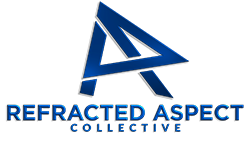
In the firearms sector, within the Shooting, Hunting & Outdoor Trades, content often serves as a critical yet underappreciated element of the sales process. Its role extends beyond simple promotion or advertising; it shapes buyer understanding, influences regulatory compliance perceptions, and supports trust-building in a highly scrutinized market. However, many leaders struggle to quantify how content contributes to sales outcomes or operational efficiency, leaving a gap between effort and measurable impact.
- Understanding Content’s Role Amid Regulatory and Market Pressures
- When Content Fails to Move the Needle: A Real-World Scenario
- Cross-Functional Friction Stemming from Content Ambiguity
- Root Cause: The Absence of Integrated Content Metrics
- First Steps Toward Aligning Content with Sales Impact
- The Single Biggest Barrier to Progress: Inertia in Decision-Making
- How Content Challenges Manifest in Daily Operations
- Frequently Asked Questions
- Reframing Content’s Role in Firearms Sales Strategy
- Taking the Next Step with Refracted Aspect
Understanding Content’s Role Amid Regulatory and Market Pressures
For firearms businesses, content is not just a marketing tool; it is a strategic asset that must navigate complex regulatory environments and shifting market dynamics. The challenge lies in integrating content effectively into the sales process without crossing the boundaries imposed by various digital platforms. This creates a tension where content must educate and engage without overt commercial intent, complicating how its success is measured.
Leadership often faces the dilemma of investing in content that supports brand credibility and customer education while lacking clear metrics to justify the expense. The absence of straightforward performance indicators can stall decision-making and obscure the true value content brings to the sales funnel. This operational tension is compounded by competitive pressures that demand differentiation without aggressive selling, forcing businesses to rethink content’s purpose and measurement.
When Content Fails to Move the Needle: A Real-World Scenario
Consider a mid-sized firearms manufacturer expanding its product line into hunting accessories. The marketing team produces detailed educational content aimed at informing customers about safe usage and legal considerations. Despite the volume and quality of this content, sales teams report little change in customer engagement or conversion rates.
Decision-makers notice that while website traffic increases, the content does not translate into measurable sales growth or shorter sales cycles. The disconnect creates a bottleneck: resources are allocated to content creation, but without clear insight into its impact, leadership hesitates to scale or adjust the strategy. This scenario reflects a common operational blind spot where content’s indirect benefits are undervalued, and its direct contribution to sales remains ambiguous.
Cross-Functional Friction Stemming from Content Ambiguity
The unclear role of content in sales processes generates friction between marketing, sales, and compliance teams. Marketing invests in content designed to educate and build trust, but sales teams often find it insufficiently targeted to close deals or address specific objections. This misalignment leads to duplicated efforts or conflicting messaging, undermining efficiency.
Compliance departments add another layer of complexity, scrutinizing content for regulatory adherence, which can delay publication and reduce agility. These delays ripple through workflows, causing missed opportunities and frustration across departments. The lack of a unified framework for evaluating content’s impact means these inefficiencies persist unnoticed, quietly eroding competitive advantage and operational momentum.
Root Cause: The Absence of Integrated Content Metrics
The persistence of this issue often traces back to a fundamental gap in how firearms businesses integrate content measurement into their sales and operational frameworks. Teams frequently treat content as a standalone function rather than a component embedded within the sales ecosystem. This separation leads to fragmented data collection and a lack of actionable insights.
Without clear metrics aligned to sales objectives, content efforts become reactive and disconnected from business priorities. This structural flaw embeds itself in daily operations, where content is produced and distributed without feedback loops that inform continuous improvement. The result is a cycle where content’s strategic potential remains untapped, and leadership remains uncertain about its true value.
First Steps Toward Aligning Content with Sales Impact
The initial shift involves establishing a clear, shared understanding of what content success looks like in the context of firearms sales. This means defining specific, measurable outcomes that content should influence—whether it’s lead quality, engagement duration, or regulatory compliance confidence—and integrating these metrics into existing sales reporting.
Leaders should prioritize small, manageable adjustments that connect content performance data with sales activities. For example, linking educational content consumption to follow-up sales conversations can reveal patterns that inform both content strategy and sales tactics. This approach respects resource constraints and operational realities while creating a foundation for more informed decision-making.
The Single Biggest Barrier to Progress: Inertia in Decision-Making
The most common friction point is the inertia that sets in when leadership faces ambiguous content ROI. This uncertainty leads to delayed decisions about content investment or strategy changes. Sales teams feel the pressure as they wait for clearer guidance, and marketing struggles to justify ongoing efforts without concrete results. The operational drag manifests as stalled initiatives, missed market opportunities, and a gradual erosion of competitive positioning.
How Content Challenges Manifest in Daily Operations
In day-to-day operations, the disconnect around content’s role often surfaces as repeated friction between teams. Sales representatives might bypass available content, citing it as irrelevant or outdated, while marketing fields complaints about underutilization. Compliance reviews can cause last-minute content revisions, leading to rushed publications or “we’ll fix it later” attitudes.
These dynamics create a cycle of corner-cutting and manual fixes that mask deeper issues. Conversations about content impact become defensive or vague, and the business runs fast enough to avoid confronting the underlying misalignment. This operational reality breeds frustration and missed opportunities, even as teams work hard to keep pace with market demands.
Frequently Asked Questions
How do I know if the content we produce is actually helping our sales team?
Start by linking specific content pieces to sales outcomes. Track whether customers who engage with educational materials move faster through the sales funnel or require fewer follow-ups. Use CRM data to correlate content interaction with deal progression. If you don’t have this visibility, it’s a sign your measurement approach needs refinement.
What’s a practical way to measure content impact without overloading my team?
Focus on a few key indicators that align with your sales goals, such as content engagement rates combined with lead conversion metrics. Avoid complex analytics that require extensive resources. Instead, integrate simple tracking tools and regular check-ins between marketing and sales to interpret the data together.
How can we balance regulatory compliance with creating useful sales content?
Involve compliance early in the content planning process to identify boundaries upfront. Develop templates or guidelines that ensure content meets legal standards without sacrificing clarity or usefulness. This proactive approach reduces last-minute revisions and keeps content aligned with sales needs.
Why do sales teams often ignore the content marketing produces?
Content may not address the specific objections or questions sales reps encounter in the field. It might also be poorly integrated into their workflows. Engage sales teams in content development and provide training on how to use materials effectively. This builds ownership and relevance.
What’s the first step if we want to improve how content supports sales?
Begin by defining clear objectives for your content that tie directly to sales outcomes. Establish simple metrics to track progress and create regular forums for marketing and sales to share insights. This alignment sets the stage for continuous improvement without overwhelming your team.
Reframing Content’s Role in Firearms Sales Strategy
Failing to clarify content’s role and measure its impact carries tangible costs: wasted resources, missed sales opportunities, and internal friction that slows growth. When addressed, content becomes a strategic lever that supports compliance, educates customers, and accelerates sales cycles. The shift requires seeing content not as a separate function but as an integrated part of the sales process, with clear metrics and shared accountability.
This perspective reframes content from a cost center to a business asset, demanding disciplined measurement and cross-functional collaboration. It’s a critical question among many that leaders in the Shooting, Hunting & Outdoor Trades must answer to maintain competitive advantage and operational efficiency.
Taking the Next Step with Refracted Aspect
Leaders in firearms businesses face unique challenges that require more than generic advice. Refracted Aspect works directly with companies in the Shooting, Hunting & Outdoor Trades to provide structured diagnostics and strategic guidance tailored to their specific operational realities and market constraints. This approach respects the expertise already present within your team while offering an outside perspective that uncovers hidden dynamics and priorities.
For those ready to move beyond uncertainty and gain clarity on what’s working and what needs attention, Book a Discovery Call with Refracted Aspect. This conversation is a practical exchange between peers who understand the complexities of your industry and can help you identify the most impactful next steps without adding unnecessary complexity.
















